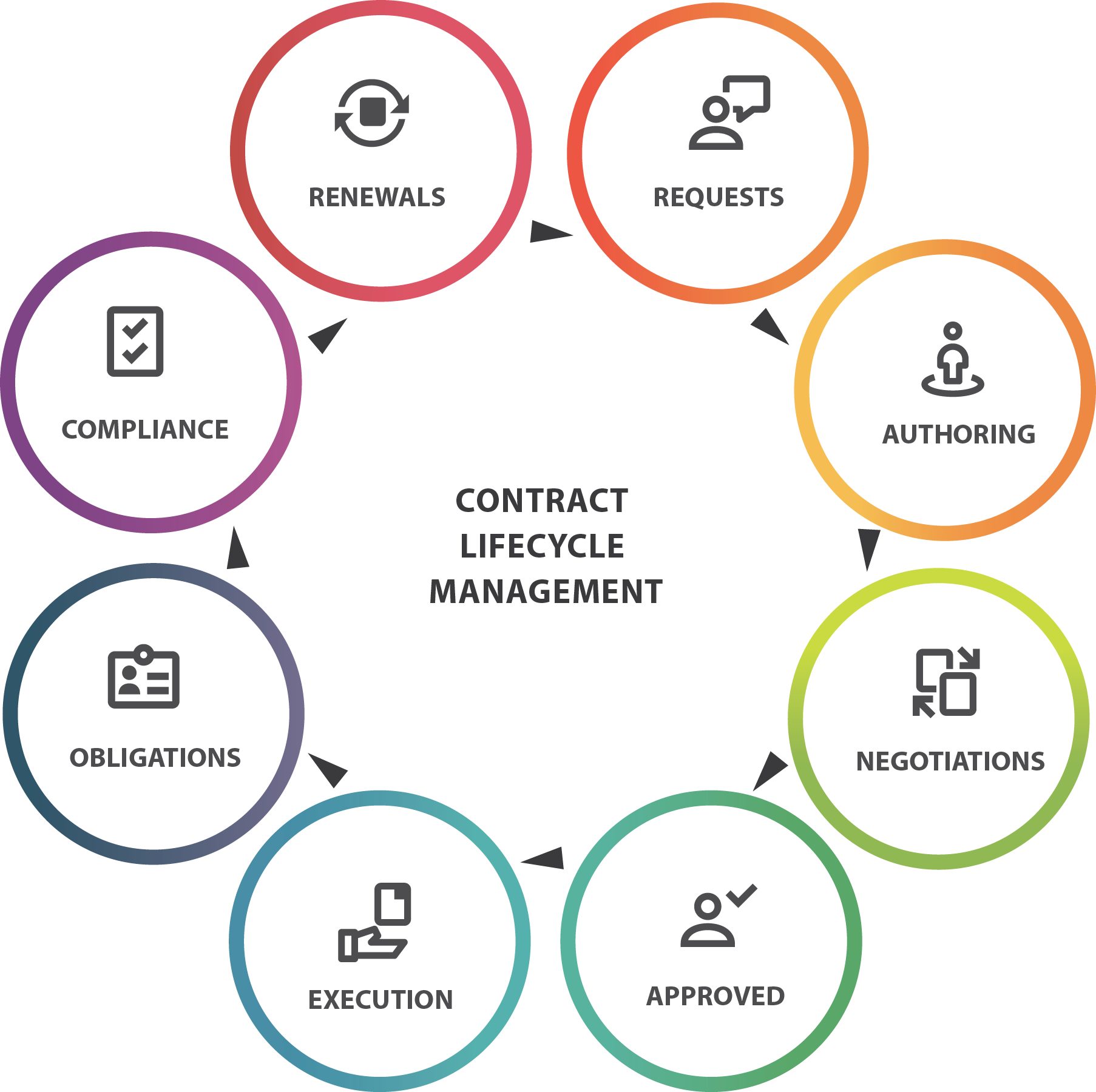
Contracts are the workhouse of businesses. Contracts are also legal bindings and as such should not be handled trivially. Due to this, organizations must fully understand the practical details of contract management.
Understanding the contract management lifecycle is very important in this sector of business. When we say contract lifecycle, we mean the procedure through which contracts are written, reviewed, signed, implemented, and renewed. Simply put, contract lifecycle is the various states contracts have to pass through; it is a simple way of compartmentalizing the complex evolution of contracts.
Knowing this lifecycle will help anyone involved in this process become confident in how they are handling it. It will also help them ensure that no part is ignored or glossed over. With that being said, let us now discuss the 8 stages of a contract’s lifecycle.
1. Requests
What kicks off any contract lifecycle are the requests. It is in this phase that the parties involved would have to express the things they are hoping to achieve through the agreement. They would also use this phase to gather as many details as possible.
This point is the pacesetter for the entire lifecycle. Therefore, it is here that would determine the agreement’s efficiency or if the agreement would be plagued by bottlenecks and delays.
2. Authoring
After the contract’s requests have been addressed and established by the parties involved, the base for authoring the agreement will be laid. This next stage is where the actual contract is authored or should we say written since another name for this stage is “contract writing”.
In this phase, the parties will put together the terms of the agreement. Standard clauses, counterparty information, key dates, and every other important information will be written. Ensure important information like parties entering the agreement, terms agreed on, and services being offered are not omitted.
3. Negotiations
This phase is a crucial one. It is at this stage that the parties will negotiate the specifications that were drafted. Great negotiation skills are paramount in this phase; therefore, if you are the one handling the negotiations, you may want to read this to help boost your skills. A lot of tug and pull may be involved in this stage.
However, at the end of it all, the agreed terms will give a clear understanding of what the parties involved expect from the agreement.
4. Approvals
After everyone is satisfied with what was negotiated, the agreement will then be drafted the second time. All parties will then get the second drafting and review it. An approval time is usually given for everyone to send in their approval. The procession of leadership the approval needs to go through may affect how long approval will take.
After the approval is gotten, parameters are set to ensure that obligations, terms, milestones, key dates, and standards are met.

5. Signatures
The next stage will be getting the agreement signed. For this, everyone involved will provide a representative; typically, a chief staff or a person who has the company’s signing authority.
6. Obligations
After signing the contract, it will be time for it to be implemented. All parties must acknowledge the duties, milestones, payment windows, deliverables, key dates, and every other obligation.
7. Compliance
Compliance works together with obligations. Alongside terms agreed on within the contract, other general contract rules, standards, laws, regulations, practices, and guidelines should be complied with. When these general laws are followed, litigation fees, bottlenecks, late fees, and other non-compliance fees will be reduced or avoided.
Compliance also helps ensure that contracts are renewed, or new ones are awarded in the future.
8. Renewals
After the terms of the agreement are met, the parties involved may either decide to end the contract or renew it. Renewal is usually the last stage and often depends on some factors like contract type, and whether the contract went favorably for the parties.
If everyone involved in the agreement benefitted from it, they may decide to continue staying together in the business. This will save them from having to go through the stages mentioned above again.
If the contract is being renewed, the parties can revisit the agreement to discuss discounts, make new additions that will make the process more seamless, and renegotiate terms. If your organization has decided to renew, then you can visit https://www.contractnow.com/blog/three-ways-to-get-more-value-from-your-contract-renewals to learn how to get more value from contracts renewal.
Conclusion
Contracts are very important in business and should not be taken lightly since they are legal bindings. To ensure no mistake is made during this process those involved must have a full understanding of the contract lifecycle (this is just a fancy phrase for the stages involved in contracts management). Each stage is peculiar and can potentially make or mar the entire procedure. Therefore, everyone involved should be keen during every step to avoid mistakes.